Heat Transfer Printing
 Heat transfer printing is currently the most frequently used printing method. Its distinctive feature is high-quality pattern reproduction, capable of meeting the design requirements of any customer. The process involves specialized printing firms creating films based on customer designs, which are then brought back to our factory for heat transfer using dedicated machines. The initial step involves designing and creating plates, with each plate corresponding to a color. A typical image effect will involve approximately six colors. The cost for setting up one plate is around $80. The standard minimum order quantity (MOQ) for printing factories is around 800 square meters, equivalent to approximately 2000 film sheets for 20L buckets. For quantities less than this, a startup fee of $100 is applicable.
Heat transfer printing is currently the most frequently used printing method. Its distinctive feature is high-quality pattern reproduction, capable of meeting the design requirements of any customer. The process involves specialized printing firms creating films based on customer designs, which are then brought back to our factory for heat transfer using dedicated machines. The initial step involves designing and creating plates, with each plate corresponding to a color. A typical image effect will involve approximately six colors. The cost for setting up one plate is around $80. The standard minimum order quantity (MOQ) for printing factories is around 800 square meters, equivalent to approximately 2000 film sheets for 20L buckets. For quantities less than this, a startup fee of $100 is applicable.
IML (In-Mold Labeling)
 IML, or in-mold labeling, is a printing process similar to heat transfer. It shares similar image resolution characteristics but differs in that IML labels are directly applied to the outside of the bucket during the injection molding process, creating an integral part of the bucket. While heat transfer only transfers ink, IML combines the entire film with the bucket, allowing for various visual effects such as matte or glossy finishes. IML can fully cover the entire bucket without leaving any white spaces, a feature not achievable with other printing methods like heat transfer. IML is considered the most aesthetically pleasing and high-end printing technology, prevalent in Europe. Its integration with the molding process ensures high hygiene and efficiency. However, IML is relatively expensive, and its widespread adoption is hindered by its higher cost compared to other methods, approximately 30%-50% more expensive than heat transfer.
IML, or in-mold labeling, is a printing process similar to heat transfer. It shares similar image resolution characteristics but differs in that IML labels are directly applied to the outside of the bucket during the injection molding process, creating an integral part of the bucket. While heat transfer only transfers ink, IML combines the entire film with the bucket, allowing for various visual effects such as matte or glossy finishes. IML can fully cover the entire bucket without leaving any white spaces, a feature not achievable with other printing methods like heat transfer. IML is considered the most aesthetically pleasing and high-end printing technology, prevalent in Europe. Its integration with the molding process ensures high hygiene and efficiency. However, IML is relatively expensive, and its widespread adoption is hindered by its higher cost compared to other methods, approximately 30%-50% more expensive than heat transfer.
 English
English Français
Français Deutsch
Deutsch Русский
Русский Español
Español

Write a Comment